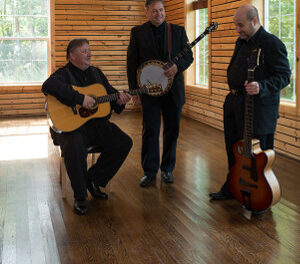Gemütlichkeit. It’s exactly the word to describe the “Afternoon in Vienna” concert that was presented Sunday afternoon in the sanctuary of St. Matthias Episcopal Church. Wikipedia has a good definition: Gemütlichkeit is “a situation that induces a cheerful mood, peace of mind, with connotation of belonging and social acceptance, coziness and unhurry.”
I should make full disclosure. I’m a parishioner of St. Matthias church and thus benefit from the free will offering that is applied to restoration of the historic church. I hasten to add that the audience also benefits. The new pew cushions improve visitors’ comfort, and the new roof prevents experiencing the gross discomfort of sitting under a drip.
This year marks the eighteenth year of the concert series “First Sundays at St. Matthias.” Gratitude is owed to the musicians, mostly professional, who volunteer their services for every one of these concerts arranged under the skilful guidance of Music Director Ron Lambe. The January concert has, for a number of years, been a celebration of the New Year in the nostalgic style of nineteenth-century Vienna featuring a 30-member orchestra directed this year by young conductor Nicholas O’Leary.
O’Leary is a new face in town; after studying for two years with celebrated conductor John Mauceri at the NC School of the Arts in Winston-Salem, O’Leary is now a student at UNC-Asheville. It soon became clear that he has the basic apparatus of a conductor: a clear beat, a sense of the structure of each piece, and a quiet authority. He uses body language such as hunched shoulders effectively (and probably facial expressions that I could not see from behind him) but still needs to develop his “left hand” technique. Great conductors use their left hand to convey subtle distinctions quite independently of the right hand that provides the beat. He showed confidence and aplomb in stopping the orchestra quickly and restarting when there was confusion at the onset of the “Elfen Polka.”
The program was dominated by familiar works of Johann Strauss, Jr., beginning with the “Thunder and Lightning Polka” and including the “Emperor Waltzes,” the aforementioned “Elfen Polka,” and the “Blue Danube Waltzes.” Two couples added ballroom dancing in the aisles of the church to most of the waltzes and polkas. I felt that it was a nice touch that one couple was dressed in elegant Viennese fashion while the other couple appeared in Hungarian-themed costume. It was, after all, the Austro-Hungarian Empire that we were celebrating.
Eduard Strauss, the third son of Johann Strauss, Sr., specialized in the “fast polka.” His “Doctrine Waltz,” presented third on the program, was a curiosity in the midst of otherwise familiar works. Eduard Strauss’ tunes are pleasant and his use of countermelodies is skilful, but the orchestration is mostly unremarkable. It seems clear why he was never as successful as his brothers Johann Strauss, Jr., and Josef Strauss.
Mary Luna sang two favorite arias from Viennese operettas, the “Laughing Song” from Johann Strauss, Jr.’s Die Fledermaus and “Vilia” from Franz Lehar’s The Merry Widow. This young soprano has a strong voice that filled the hall, a confident upper range, and a well-controlled vibrato that was a little rapid for my taste. She is affiliated now with Asheville Lyric Opera, and I hope to hear more from her.
In the best Viennese tradition, the concert ended with the “Radetsky March” of Johann Strauss, Sr. O’Leary skillfully directed both the orchestra in performing the work and the audience of nearly two hundred in their rhythmic clapping. He managed with hand signals to cut off the clapping where it should cease and even to direct the audience to clap softly and then fortissimo at the climax. It was a pleasure to see this young conductor at work. John Mauceri should be proud of his protégé.












